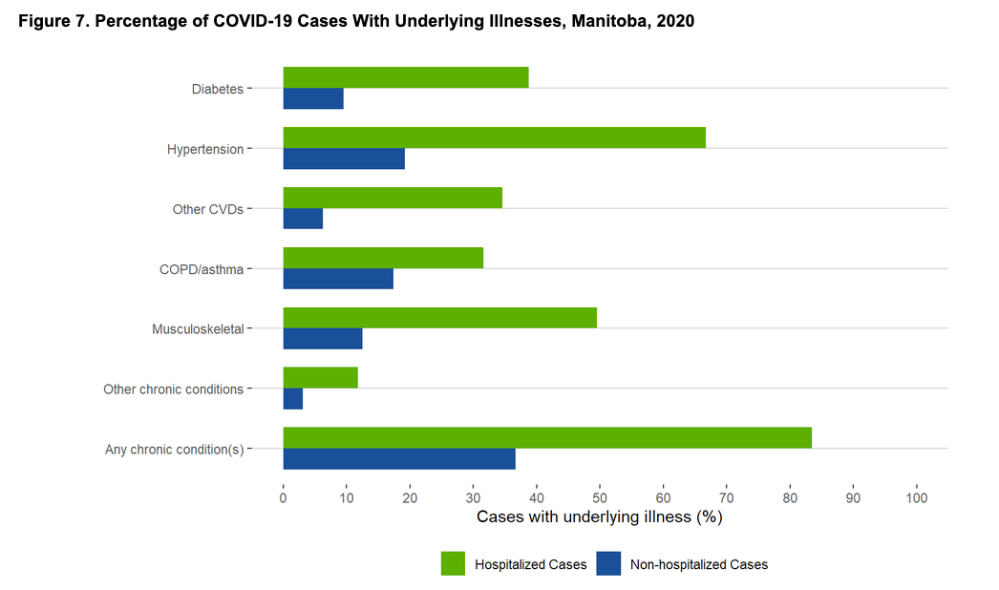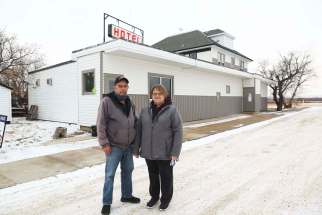Prevention, protection, not minimization
Read this article for free:
or
Already have an account? Log in here »
To continue reading, please subscribe:
Monthly Digital Subscription
$0 for the first 4 weeks*
- Enjoy unlimited reading on winnipegfreepress.com
- Read the E-Edition, our digital replica newspaper
- Access News Break, our award-winning app
- Play interactive puzzles
*No charge for 4 weeks then price increases to the regular rate of $19.00 plus GST every four weeks. Offer available to new and qualified returning subscribers only. Cancel any time.
Monthly Digital Subscription
$4.75/week*
- Enjoy unlimited reading on winnipegfreepress.com
- Read the E-Edition, our digital replica newspaper
- Access News Break, our award-winning app
- Play interactive puzzles
*Billed as $19 plus GST every four weeks. Cancel any time.
To continue reading, please subscribe:
Add Free Press access to your Brandon Sun subscription for only an additional
$1 for the first 4 weeks*
*Your next subscription payment will increase by $1.00 and you will be charged $16.99 plus GST for four weeks. After four weeks, your payment will increase to $23.99 plus GST every four weeks.
Read unlimited articles for free today:
or
Already have an account? Log in here »
Hey there, time traveller!
This article was published 25/11/2020 (1842 days ago), so information in it may no longer be current.
Focusing on any underlying health conditions of those who die from COVID-19 “minimizes” their deaths, Manitoba’s top doctor says.
It’s an odd position for chief provincial public health officer Dr. Brent Roussin to take. Infectious disease experts regularly analyze the profiles of those at-risk of severe outcomes of an illness, including pre-existing medical conditions.
Data shows the majority of people who die from COVID-19 are over 60 and have underlying health conditions.

Roussin suggests making reference to that may diminish the loss family and friends experience when a loved one dies of the disease caused by the novel coronavirus.
“This is the basis of a lot of misinformation out there, that somehow because a large proportion of COVID deaths have underlying medical conditions that it somehow minimizes the impact of COVID or minimizes the impact of those deaths,” Roussin said Tuesday.
It’s unclear what “misinformation” he is referring to.
From the beginning of the pandemic, questions have been asked about the age, gender and underlying health conditions of those who have died from COVID-19. Information has also been sought about the race, economic status, and geographical location of people who have contracted the disease.
Such inquiries are intended to help the public better understand the characteristics of those infected with the virus.

Manitoba releases some of those profiles in its weekly COVID-19 surveillance reports. Public health publishes the percentage of people in hospital with the disease who have other medical conditions (such as diabetes, hypertension and heart disease).
More than 80 per cent of patients in Manitoba hospitals with COVID-19 have a pre-existing illness. Some have died.
“There is no reason to think that a death caused by COVID in those situations is somehow minimized,” said Roussin. “This doesn’t minimize the impact of COVID at all, and it most definitely doesn’t minimize the loss of that loved one to their family.”
Who is saying it does?
Roussin has made the statements several times over the past week, when reporters have asked questions about the pre-existence of medical conditions in COVID-19 deaths. Since most of those deaths are among the elderly with underlying health conditions, questions about health status arise when deaths occur outside that demographic.
Only three people under the age of 19 in Canada have died from COVID-19, according to the Public Health Agency of Canada. There were 16 deaths under the age of 29.
Naturally, the public is interested in knowing when younger, otherwise healthy people have a severe outcome from the disease. They have a desire to know more about how the virus is affecting the broader population. That isn’t a sign anyone is minimizing COVID-19 deaths.

The better society understands COVID-19 risk factors, the more effectively it can protect those who are most vulnerable to them. Manitoba has done an appalling job of protecting vulnerable groups from COVID-19.
Despite having the entire summer to prepare for a second wave of COVID-19, government did precious little to bolster staffing in personal care homes (even though they knew the one-site personnel policy would create severe shortages, as increasing numbers of health-care workers stay home to self-isolate).
It is now reacting after the fact to dozens of outbreaks.
People with underlying health conditions are also contracting COVID-19 while in hospital.
According to the Winnipeg Regional Health Authority, 12 per cent of people hospitalized in Winnipeg since March who tested positive for COVID-19 were likely infected while in hospital care.
Of the 409 people in Winnipeg hospitals with COVID-19 between March 12 and Nov. 18, 49 were not admitted because of COVID-19. They were diagnosed with the disease after the fact.
The public has a right to know what health officials are doing about that.
Questions around age and comorbidity are meant to give people a better understanding of how the virus is affecting people in all demographics, whether previously healthy or not.
It doesn’t minimize those deaths. It’s meant to help prevent them.
tom.brodbeck@freepress.mb.ca

Tom has been covering Manitoba politics since the early 1990s and joined the Winnipeg Free Press news team in 2019.
Our newsroom depends on a growing audience of readers to power our journalism. If you are not a paid reader, please consider becoming a subscriber.
Our newsroom depends on its audience of readers to power our journalism. Thank you for your support.






